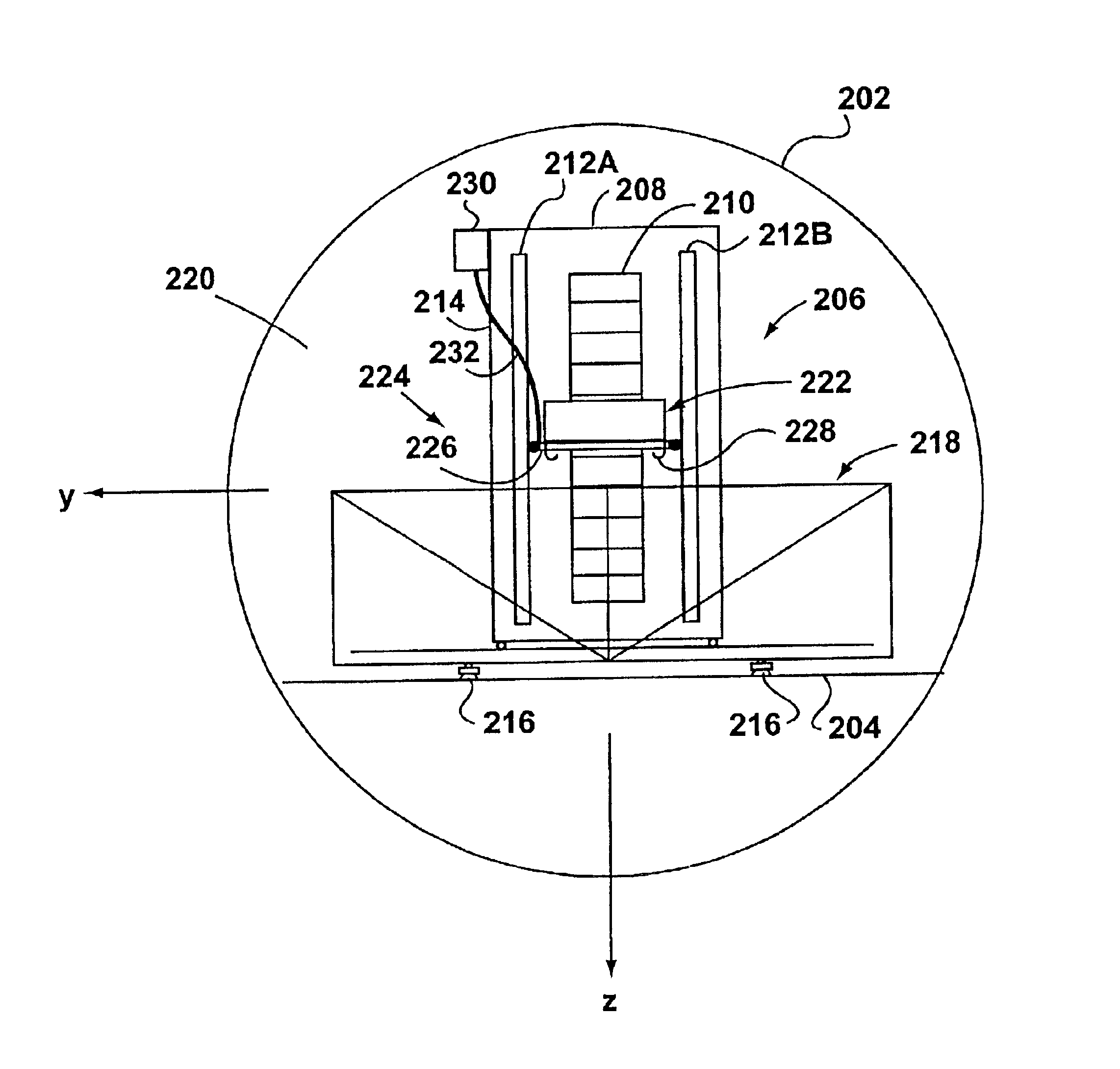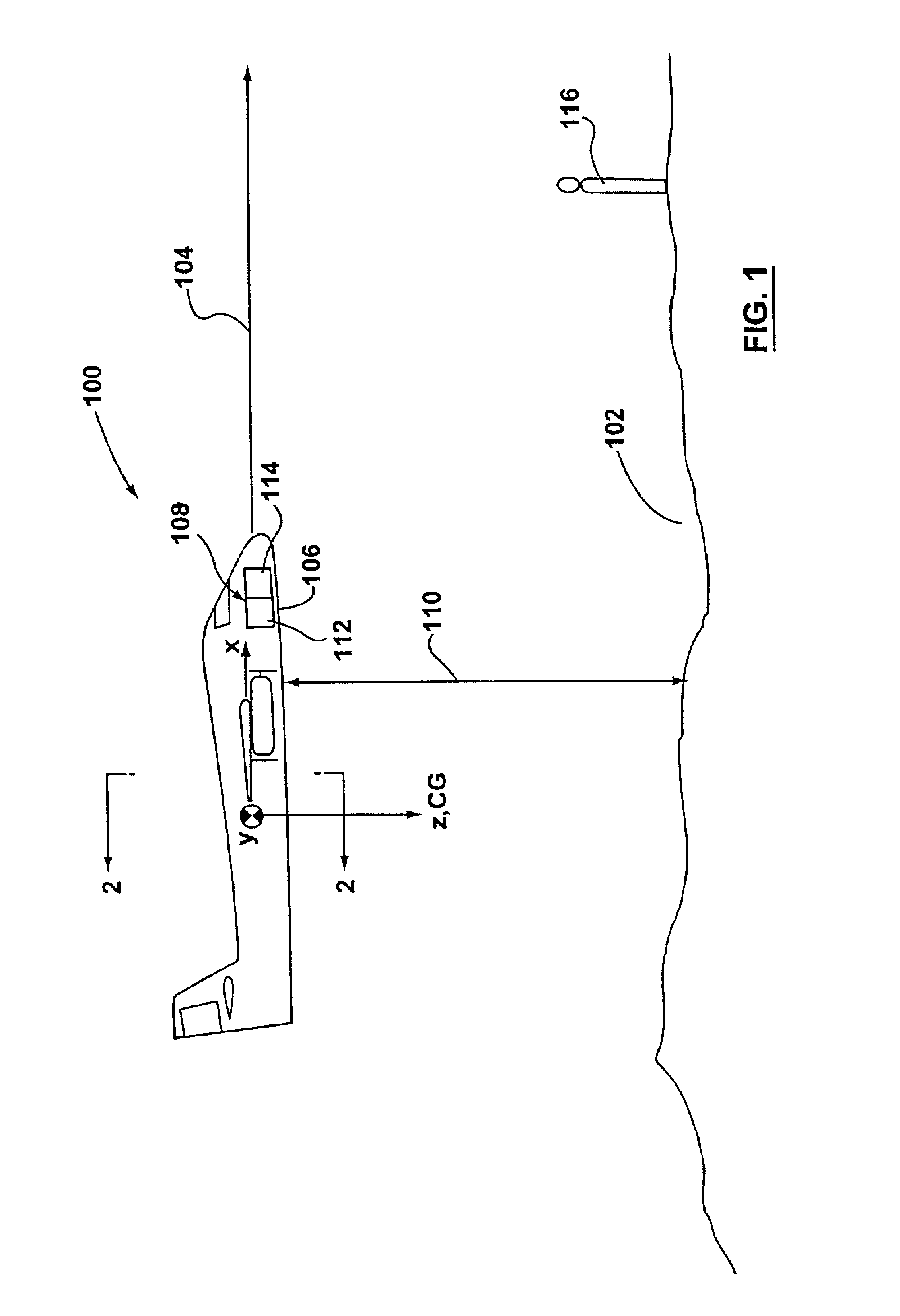Gravity gradiometry
a gravity gradiometry and gravity technology, applied in the field of gravity gradiometry, can solve problems such as the introduction of higher frequency disturbances
- Summary
- Abstract
- Description
- Claims
- Application Information
AI Technical Summary
Benefits of technology
Problems solved by technology
Method used
Image
Examples
Embodiment Construction
Referencing FIG. 7, the inventors have noted that, ideally, the center of mass of each dumbbell 1102 in a crossed dumbbell gravity gradiometer will be exactly coincident with its center of rotation. This rotation occurs about a pivot, which can conveniently be in the form of a web connecting the dumbbell to the instrument body. In this case the web also acts as a torsion spring. Such a structure is described in U.S. Pat. Nos. 5,804,722, 5,505,555 and 5,668,315 issued to Van Kann.
The elegance of this concept lies in its ability, at least ideally, to discriminate against translational and angular accelerations. With the center-of-mass of each bar 1102 coincident with its center of rotation, except for second order effects described below, no net torques are produced by translational accelerations, so no scissoring rotations occur due to translational accelerations.
For the effect of translational accelerations, it has been noted by the inventors that all real instruments depart from th...
PUM
| Property | Measurement | Unit |
|---|---|---|
| frequencies | aaaaa | aaaaa |
| gravitational acceleration | aaaaa | aaaaa |
| acceleration | aaaaa | aaaaa |
Abstract
Description
Claims
Application Information
 Login to View More
Login to View More - R&D
- Intellectual Property
- Life Sciences
- Materials
- Tech Scout
- Unparalleled Data Quality
- Higher Quality Content
- 60% Fewer Hallucinations
Browse by: Latest US Patents, China's latest patents, Technical Efficacy Thesaurus, Application Domain, Technology Topic, Popular Technical Reports.
© 2025 PatSnap. All rights reserved.Legal|Privacy policy|Modern Slavery Act Transparency Statement|Sitemap|About US| Contact US: help@patsnap.com



